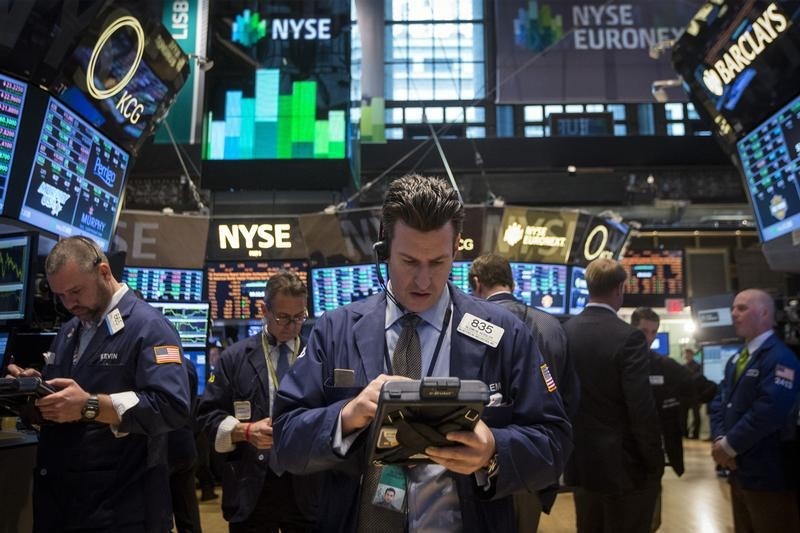Stocks were more volatile as traders digested the CPI report ahead of the Federal Reserve’s decision.

U.S. stocks fell sharply in morning trading on Tuesday after a key measure of U.S. consumer prices was in line with expectations, showing inflation slowing to 3.1% in November. The core consumer price index (CPI), which excludes highly volatile food and energy, rose 0.3% compared to the previous month, consistent with the Ministry of Labor’s forecast.
This situation has fueled optimism that the Fed may not need to remain aggressive on interest rate policy. As a result, stocks remained flat for the day as traders likely took advantage of the opportunity to take profits after rising in response to the November CPI data. S&P 500 futures nearly topped 4,700 at one point during Tuesday’s pre-market session.
The stability of core CPI suggests inflation pressures are in line with expectations, which could ease concerns about the need for the Fed to take more drastic action. The Federal Reserve has been closely monitoring economic data, and if consumer price data falls within its forecast range, it could influence the central bank’s decisions on future monetary policy.
Investors are sensitive to inflation data. That’s because inflation data has a huge impact on broader economic conditions and monetary policy decisions. The in-line core CPI reading contributes to positive market sentiment, along with hopes that the Federal Reserve can find a balanced approach to supporting economic growth without causing excessive inflationary pressures.
Headline inflation rose 0.1% in November, just above the flat growth expected. On a yearly basis, CPI rose 3.1%, in line with expectations. Core inflation rose 0.3% month-on-month, but rose 4% year-on-year, in line with expectations.
By item, the food index rose 0.2%, following a 0.3% increase in October. The energy index in November decreased by 2.3%, smaller than the 2.5% decrease in the previous month. The Shelter Index, a closely monitored indicator by the Federal Reserve, rose 0.4% in November compared to a 0.3% rise in October.
“The FOMC will allow 3.5% inflation in 2024, but not a recession,” said Stephen Blitz, chief U.S. economist at TS Lombard. “61% of adults own stocks, the highest since 2008. “The Fed will not sacrifice faith in stocks at the expense of 2% inflation.”
Focus shifts to FOMC
Although the market acknowledges that further rate hikes by the Federal Reserve are highly unlikely, Tuesday’s CPI report and subsequent market reaction will likely influence Chairman Powell’s tone at Wednesday’s meeting. The market expects the Federal Reserve to freeze interest rates by maintaining them at 5.25-5.50%.
Inflation data remains an important factor in determining when interest rate cuts will begin. November data showed continued dynamics in shelter and core non-shelter service inflation, but a milder trend in commodity prices.
As service and shelter inflation continues, rate cuts are likely to begin later than market expectations, with the first cuts likely to occur in the second half of the year, later than current market consensus. This may be the main reason why the ongoing rally in risk assets does not yet have much upside.
Data released since the November meeting indicated easing in economic activity, disinflation and a slowdown in the labor market. This likely strengthened the Fed’s confidence in the validity of its current policy stance, which Powell and his colleagues perceive as “sufficiently restrictive.”
The November CPI report is key data ahead of the Federal Reserve’s decision on Wednesday. The central bank took a positive step forward on inflation expectations on Friday after the University of Michigan Consumer Sentiment Survey in December showed a significant decline in inflation expectations one year out and inflation expectations five to 10 years out.
Accordingly, the Fed’s future decisions are expected to focus more on the period of maintaining the current policy stance rather than considering the need for further tightening of the base interest rate.
According to a recent CNBC survey, the U.S. central bank plans to cut interest rates in mid-2024. Respondents expect the Federal Reserve to begin cutting interest rates next year, with a majority expecting cuts to begin around June and reach 69% by July.
“The Fed should begin to lay out a roadmap for rate cuts that could signal tighter policy because lower rates would delay the decline in inflation and push real interest rates higher,” said John Ryding, chief economic advisor at Brean Capital.
On average, survey participants expected a cut of about 85 basis points in 2024, which would mean a cut of about 25 basis points per quarter. However, this outlook falls short of the 120 basis points reflected in the futures market. The outlook also includes an increased likelihood of a soft landing for the economy and reduced inflation.
Meanwhile, the market currently sees a 42% chance the Fed will cut rates in March, and that number rises to 50% for the May meeting, according to the CME FedWatch tool. The consensus sees the federal funds rate ending next year at 4.25-4.5%.
summary
US stock futures were mixed in early New York on Tuesday after better-than-expected inflation data. That has fueled speculation that the Fed will keep interest rates higher to bring inflation back to its 2% target. The central bank is expected to decide on interest rates tomorrow and markets expect rates to remain at current levels.



